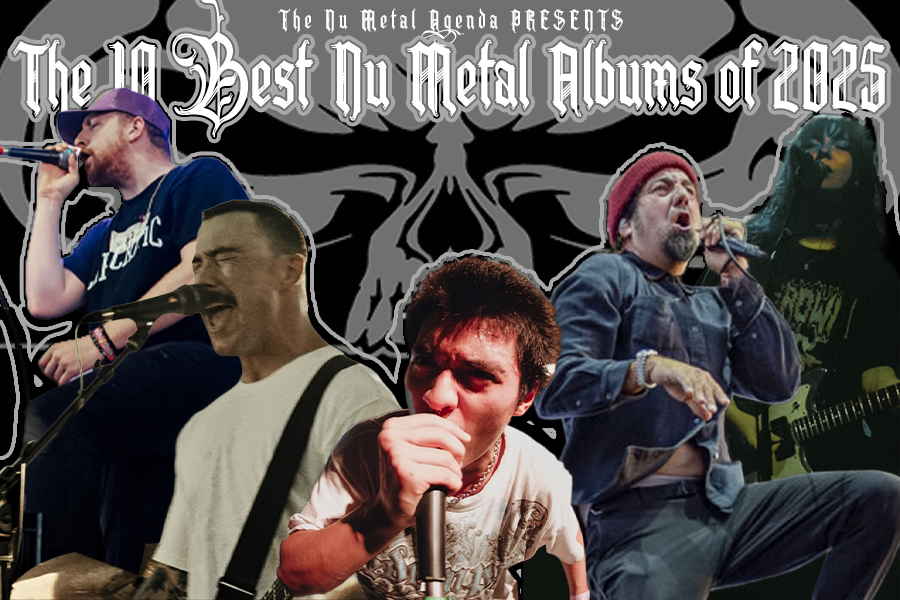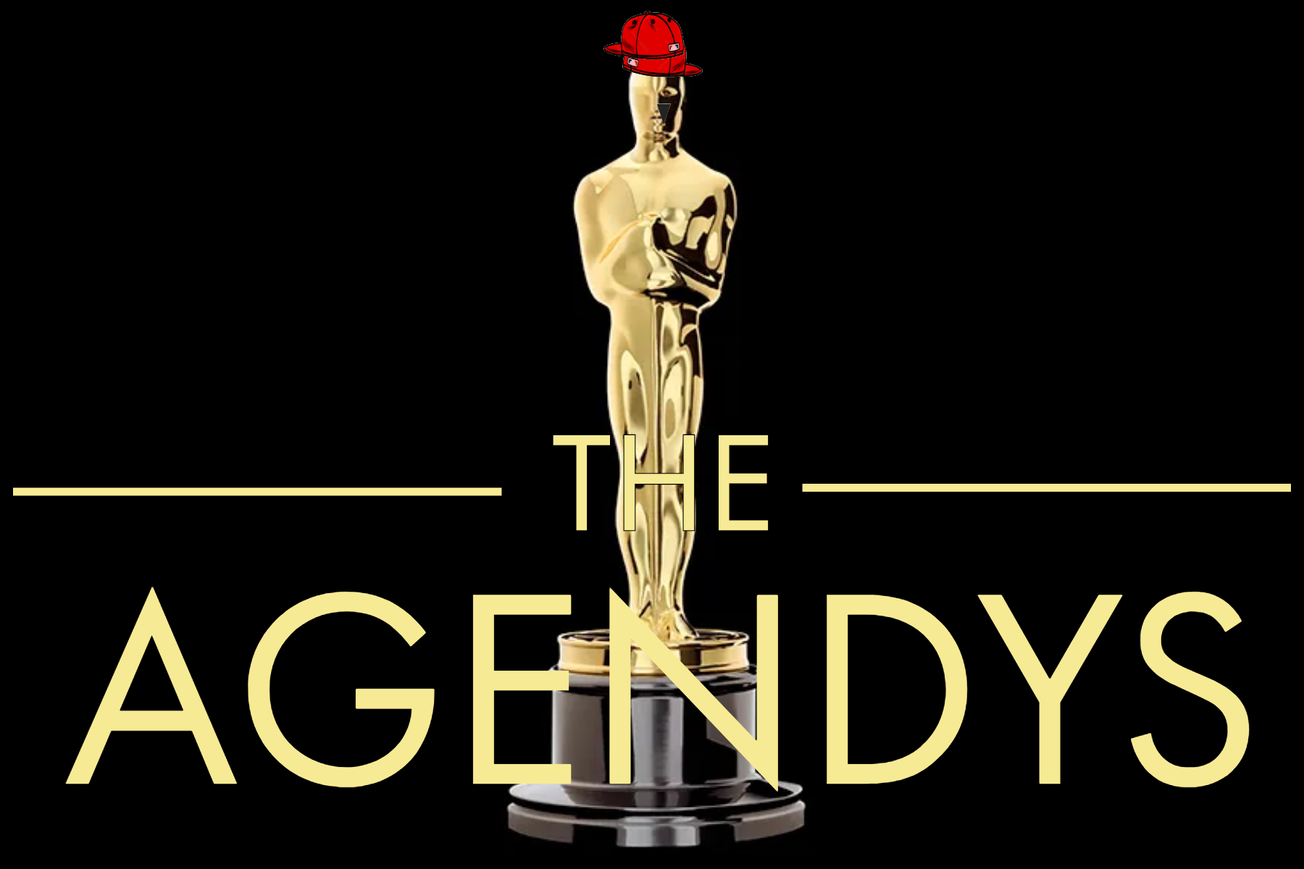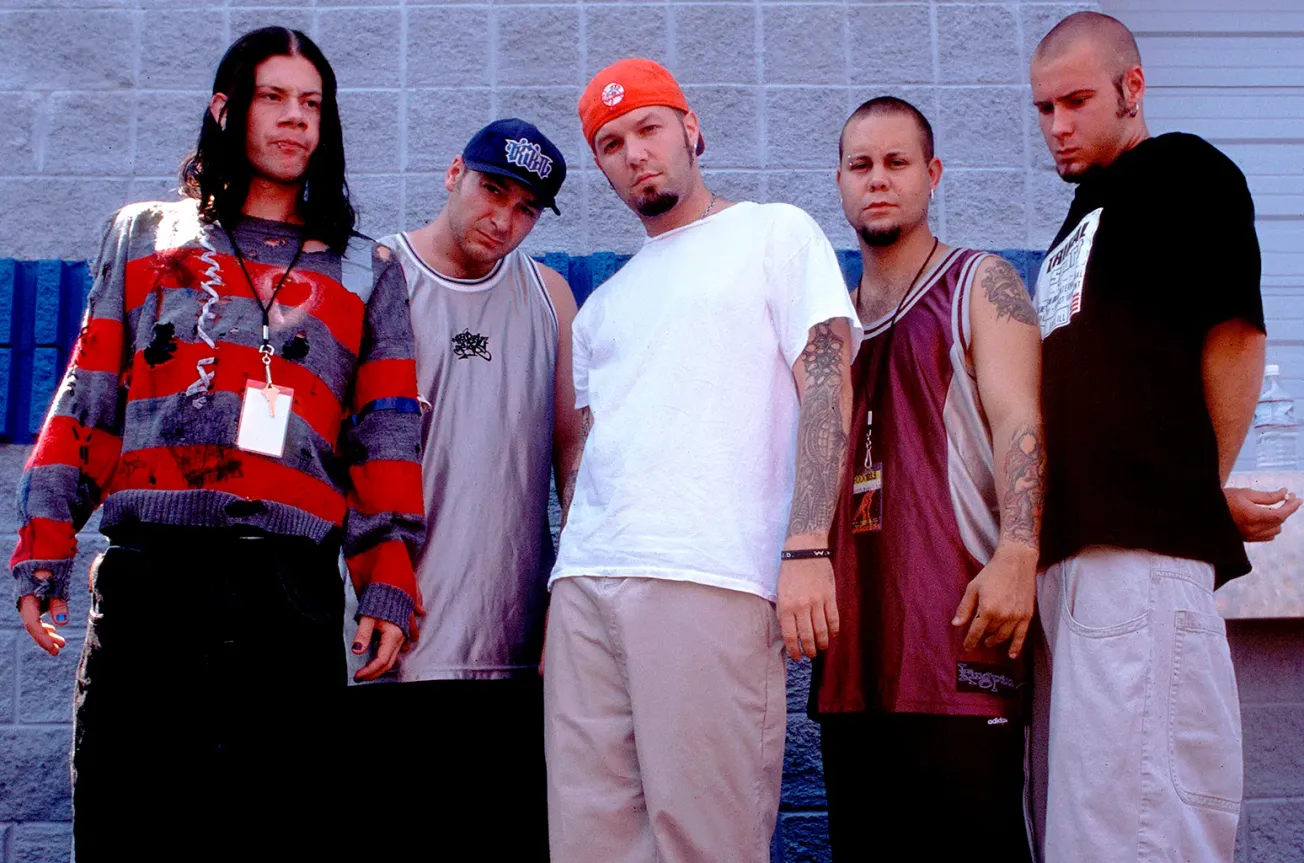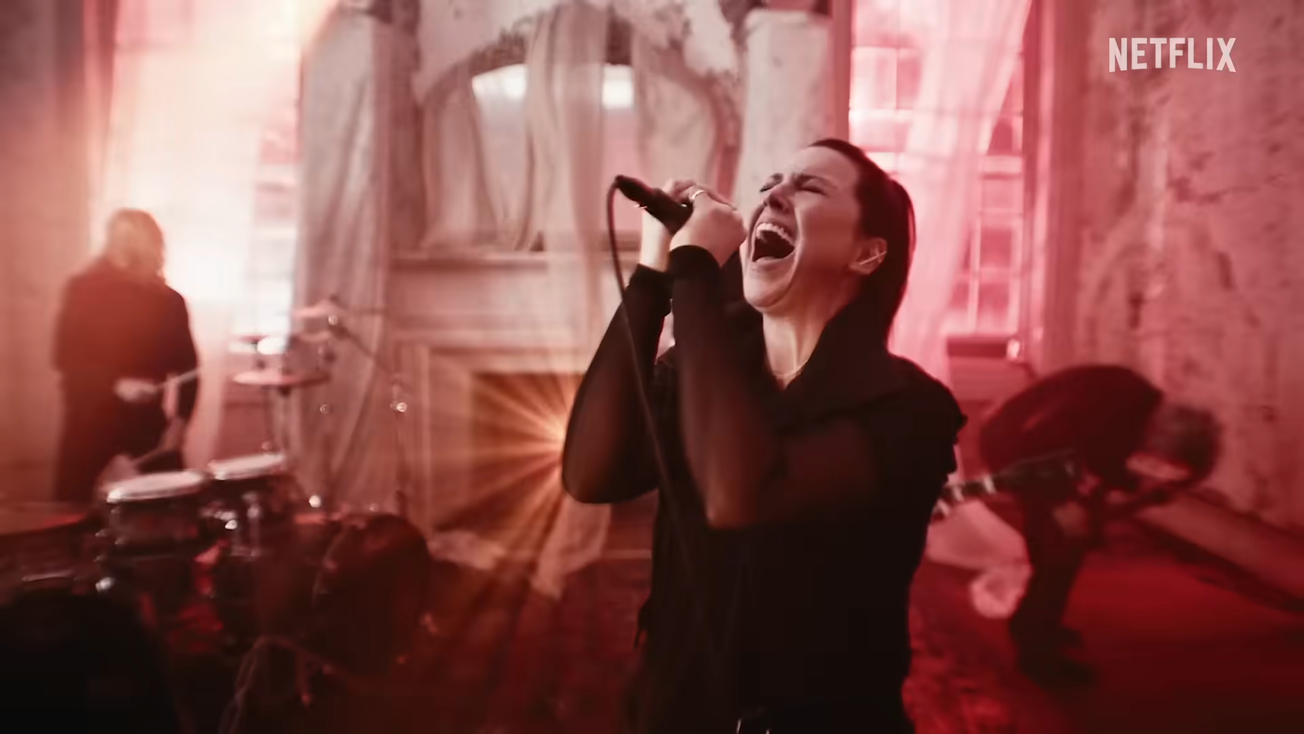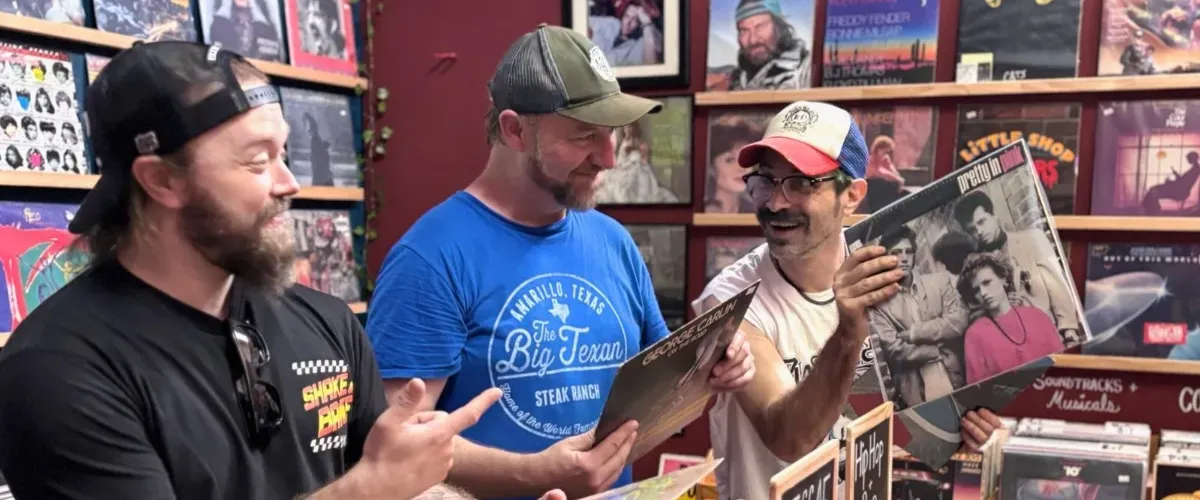Part of the glorious, gonzo power of nu metal lies in its utter disregard for boundaries, either of genre or of good taste. Born of fusing the dirtbag funk of the Red Hot Chili Peppers with the abusive low end of grunge and industrial metal, the proto-goth aesthetics of post-punk with the swag of hip hop, and Gen X’s yen for blaming one’s parents with a nascent millennial instinct to monetize everything, the ethos from the very beginning was to take the most live-wire and id-driven elements from music culture and use them to shove past where the limits had been set, whether in terms of what sounds you could bring it, how aggressive you could be, or in what kinds of trauma and violence and true life shit could be exposed under the harsh glare of nu metal’s bare, swinging bulb.
One of those elements, gleaned largely from hip hop, is the great tradition of the captured dialogue interlude. Ranging from staged improv skits to field recordings, the interlude can operate as a tossed-off joke or as a table setting for the vibe of an entire record. In hip hop, we get stuff like Mobb Deep’s threatening take to camera on “(The Infamous Prelude)” or the winky dramatics that kick off “Wu Tang: 7th Chamber,” but like with everything else it touches with its freaky little paw, nu metal took that shit and did its own thing.
There’s something of the genre’s adjacency to the trash-thrills of hicksploitation and found-footage horror in these bands’ use of the motif, only filtered through Beavis and Butthead and half a dozen plunges on the ol’ gravity bong. This was largely a first-wave, CD-era phenomenon—reality TV shared its infancy with nu metal, and the expanded recording capacity of CDs along with the relative ease of counting tracks on your player’s digital display or checking to see if the last song is 18 minutes long did a lot to gamify the discovery of secret songs and stashed-away artifacts. Today, the novelty of this sort of thing is largely buried under the avalanche of recorded hijinks a mere thumb-tap away (YouTube is a nu-metal interlude, metastasized). But for the bands who chose to do something unexpected with them, interludes became a way of not just extending the aesthetics of a record, but of opening up dimensions in the records themselves, breaking down the boundaries between the music and the world it lived in in a way that pulled you in deeply—sometimes more than you wanted.
To honor nu metal’s unique take on the interlude, here is a list of some of the best and weirdest the genre had to offer.
1. Korn – “Michael & Geri argue about machine parts” at the end of “Daddy”, Korn (1994)
Like all the best subgenres in rock’s history, nu metal is a blue-collar art. And if you grew up in a working-class town or neighborhood, you’ve stood around awkwardly while two often married people verbally abused the shit out of each other over something they probably both had wrong. Funny? Yeah, mostly. But behind the scenes, people like this sometimes beat the shit out of each other, or worse. Korn’s debut record is a masterpiece of American underbelly darkness, and this bit of tape coming at the end of a song like “Daddy” might make you laugh but it should probably make you a little sick too.
2. Limp Bizkit – Ben Stiller’s, uh, “Freestyle” at the end of “Outro”, Chocolate Starfish and the Hot Dog-Flavored Water (2000)
Speaking of making you a little sick, this entry might test the limits in a different way. Chocolate Starfish was Limp Bizkit’s commercial peak, selling over 10 million copies, and like many a band’s zenith, it was simultaneously their shark-jump. The insane sales more a reflection of the band’s enormous cultural ascension on the backs of two far superior records than of the impact of anything this album has to offer, which is basically a reheating of Significant Other marred by a disengaged Borland (he’d leave the band soon after), and Durst’s dried-up pen, the frontman falling back on flaccid threats and engorged self-pity in the absence of fresh lyrical ideas.
Sharper than anything else on the record, “Outro”, the album’s final track, features Ben Stiller (the comedy star’s inclusion an indication of the band’s new location in the firmament) mocking the band in the studio with droll prompts from Durst. Singling out DJ Lethal (“That’s what his mama named him, huh?”) and the band’s “message” (“Ooh, I can slash your ass with a chainsaw”), the bit culminates in Stiller’s dickish laugh looping for three full minutes, an effect moves from funny to obnoxious to chilling before being cut off by a series of voicemails from people trying to catch up with a jet-setting Durst. It’s a canny, deceptive bit—what at first feels like a slack attempt at self-awareness from a band very conscious of its reputation for juvenilia, the bit curdles at the end, grabbing critics by the back of the head and rubbing their noses in Limp’s success, reminding everyone in the process who is getting the last laugh on the way to diamond status. Much like the band’s artistic output, mileage may vary, but you can’t deny there’s never been anything quite like it.
3. Nailbomb – The Breather, from “While You Sleep, I Destroy Your World”, Proud To Commit Commercial Suicide (1995)
Hailing from the bleaker, harder, more thrash-influenced side of nu metal, Max Cavelera’s short-lived Sepultura side-project Nailbomb opens and closes “While You Sleep, I Destroy Your World” with a recording of a prank call. A man picks up the phone to find only low, slightly labored breathing on the other end of the line; irritated, he demands to know who’s calling. The breather is on our end of the line, of course, the sound mix placing us right next to them, complicit in whatever this is.
The song proper kicks in over top, burying the encounter. “I’m the one you rejected,” Cavelera’s heavily distorted vocals declare, “Your only crime is you’re an easy target”. Throughout the song, clips featuring news media discussions of serial killers, the words of victims, and a statement from someone confessing truly horrifying crimes are cut into the mix, along with phones ringing unanswered. “I’ve participated in actual crucifixions of human beings,” a softly southern voice matter-of-factly reports. “All across the country there’s people just like me who set out to destroy human life.”
The track ends by circling back to the phone call, the beeping of a dead line playing over a strangled scream that bleeds out of the mix, having been buried in it all along, on loop, all the more unsettling for having been hidden in plain sight. The audio is a bit of classic nu metal world-building; at first juvenile, then quickly upsetting, a little too real to sit comfortably on a CD in a kid’s bedroom.
4. Mushroomhead – “Dark and Evil Joe”, M3 (1999)
From one of the more idiosyncratic corners of nu metal, Mushroomhead brings an eclectic palette of synths, keys, and oddball little studio zigs and zags to their otherwise thick-necked, riff-focused sound. Sonically, they’re something like the thinking-man’s White Zombie, meaty grooves and meatier vocals surrounded by an art-directed vibe that trades swamp circus for an unfashionable-feeling hall-of-mirrors mysteriousness. As if to underline their distance from the rest of the scene, they close with “Dark and Evil Joe”, a truly unsettling collage of sonic hallucination that winds its way through a forest of variously audible recorded dialogues, giggling children, and distorted, unplaceable sounds, like a funhouse ride through shards of memory and sensation organized via dream logic. After a disorienting seven minutes of this, we suddenly find ourselves at another nu metal prank-call—almost a subgenre of these scenes—this time featuring an exaggeratedly hood-sounding black dude responding to an ad for a lead guitarist placed by a hapless black metal musician named Joe. Joe steps in it by saying the caller sounds like he wouldn’t “fit the bill” in his band, inviting a hilarious high-press offensive from the caller that Joe keeps trying to backpedal out of.
Caller: “…you want a motherfuckin’ black band, and you don’t want—“
Joe (stuttering): “It’s not—it’s “black” as in “evil and darkness”—“
Caller: “I can be evil and darkness, hold up, want me to kick some rhymes for you? (Rapping) Motherfuckin devil comin' down on your street…”
This goes on, the caller’s hilarious challenges (“I’ll show you motherfucking evil: East 72nd and St. Clair.” “I don’t hang around that kind of area” Joe replies. “You’re damn right you don’t…”) drawing out the obvious racisim behind Joe’s utter refusal to consider the possibility of inviting a black guy into even auditioning for his band, and the hollowness of the cartoon evil that black metal can claim to traffic in. A “you can’t handle the truth” moment arrives when Joe finally declares that black metal has nothing to do with black people, about as clear a statement of the worst possible form of scene gatekeeping as you can get. It feels appropriate that this takedown comes via a nu metal band, given the genre’s position (especially at the turn of the millennium) as by far the most diverse in all of metal. Let us never forget that rock and metal’s red-headed stepchild was on the right side of history from the beginning.
5. Slipknot – “Mudslide” (hidden track), Slipknot (1999)
As nu metal’s most theatrical band, it’s no surprise that Slipknot provides two of this list’s most indelible moments. What might be more surprising is that they don’t use them as an opportunity to evoke the kinds of overt, Tobe Hooper-ass horrors you might expect from this bunch, but rather to give us scenes from their adventures out there in the real world.
The hidden track at the end of their frothing self-titled record—if not technically their first, then certainly their arrival— finds three-odd minutes of audio featuring the band apparently gathered around the computer watching the kind of video that was the primary industry of the early internet, ie. some freaky porn so utterly debased as to be presumed mythic until actually witnessed, invariably with a roomful of dudes rapt as hominids before a clutch of flame. Judging from their reactions (“She can’t get enough!” “Just pretend it’s pudding…” *vomits* “She is covered in it…”), yep, it’s poo stuff, but what makes this clip almost sweet is how clearly disturbed they all are by what they’re seeing. There’s a youthful glee to the cathartic rage of Slipknot that matches the vibe of this little Easter egg. In a career spent purging some of the darkest corners of the human soul, could “Mudslide” be Slipknot at their most relatable?
6. Slipknot – “Huffys Between Dumpsters” (hidden track), .5 (The Gray Chapter) (2014)
My favorite of these interludes is the sequence of moments that ends Slipknot’s fifth record and first following the death of founding bassist Paul Gray and the departure of Joey Jordison, .5 (The Gray Chapter). The record itself is both a heavier and more meditative outing than the previous couple, as the nearly 20-year-old institution reflects on loss and change while trying to stay tapped into its identity as the band that took nu metal to new extremes.
Opening with two minutes of silence in honor of Paul (No. 2) before shifting into a somber instrumental, the hidden track ends with an odd, pitched-up and distorted bit of captured audio that seems to feature a member of the band (internet-rumored to be Chris Fehn) having a street conversation with a man claiming to been (among many, many other things) the drummer on Metallica’s “first three cuts”, to have done “all the songwriting” for Creed, Nine Inch Nails, Marilyn Manson, Metallica, and the Red Hot Chili Peppers, to have started Howard Stern and worked for Disney, been lead singer on “all of Guns and Roses” and certified the #7 rhythm guitarist of all time back in ‘85, before asking if Slipknot is doing any hiring or looking for songwriters. His bragging and pitching spent, he gets vulnerable for a moment, referring to needing rehabilitation. Talk moves to his start as a rhythm guitarist for Bad Company before getting in trouble with a coke habit and spending 15 years in San Quentin. “You get out there on the road in that tour bus…” he laughs, leaving the rest subtext.
There’s a particular pathos to the kind of street bullshitter you’ll come across if you can offer a smoke and five minutes of your attention… It may be true, it may not be true, or maybe the truth is both in and around all the stories and claims, tales of epic rises and falls, the distance between the guy recording and the guy confessing may be as short as a too-grinding tour and too-available drugs. One of the most pernicious myths we live with is that anyone can be anything and you’re only ever one step or one move or one hustle away from your wildest dreams, when in reality we have little control and less assurance of a happy ending. Struggle is struggle and loss is loss; we’re not different, any of us.
The conversation ends abruptly in a cut to a brief, funereal little dirge, Corey Taylor singing from what feels like across the room while an accordion and maybe a clutch of brass moan a few chords, a sort of bookend to the organ that opens the record. “Don’t wait until next time…” he croons, letting the line hang. It’s a sensitive edit, these nine minutes at the end of the record, and says a lot about where Slipknot were finding themselves in 2014.




